The worst thing that can happen during a round is hitting a slice or hook out of nowhere and not knowing why.
When this happens, it is incredibly hard to mentally focus on the shots you want to hit. Instead, the mind starts to panic about what you’re going to score especially if you are playing in a competition and you’re trying to play to your handicap.
So then you start to think about what could have caused it, which is almost impossible as the golf swing is made up of fractions. Finally, you start worrying about when it is going to happen again. On the next shot, next hole, 3 holes time?
This now stops you from focusing on the shots you want to hit and more on the fundamentals that you think caused that shot. (read more about swing thoughts on the course here)
How to control these…
Firstly, try adopting a half swing. A half swing helps you regain the correct timing enabling you to have more control over where the ball is going. Although you might lose a bit of distance by doing this, it will help you keep the ball on the fairway and in-play, therefore, keeping your score on track. This is something I always do if I am struggling with direction or strike on the golf course as I usually get really quick and long with my backswing so this helps me slow down and shorten my backswing. If you look at someone like Tony Finau, he has a very short backswing compared to most of the other players on tour but still hits it a long way and has really good control.
 Secondly…
Secondly…
Fundamentals are another key aspect to check as they are the simplest solutions sometimes.
Make sure your grip hasn’t gotten too strong or weak as this could be a cause as to why you have sliced or hooked it and could be a simple fix to get you back on track.
Alignment is another key aspect to check, this includes feet, shoulders, and hips. This again has a big impact on where the golf ball goes and is something that is easy to check and adapt.
Posture is the last fundamental to check. It is easy for your posture to become too upright or too slouched which can have a detrimental effect on the direction of the ball.
Thirdly…
Try keeping your psychological state strong. If you have a pre-shot routine, it is key that you stick to it even if the outcome of the shot is not what you wanted. The reason for this is so that the mind can focus on something other than the negative thoughts about the shot you are about to hit.
Also, try resetting yourself after each shot, this can be hard to do but if its a good or a bad shot try getting yourself back to the mental state of this is your first shot of the day each time. This will help clear the bad shots out of your mind and not get you too excited if you have just hit an amazing shot. This is something most of the top players on tour do well.
Another technique you could adopt is something that will calm you down, for example, Tiger Woods chew’s gum to stop him from getting hungry during the round, but this may help you to keep calm by chewing on something. Or attaching a stress ball to your golf bag, something simple that will help keep you calm.
Finally…
What can you do if you have a few bad rounds…
Firstly, keep a record and analyze what was the pivotal moment that made you start playing bad, was it that your playing partner was having a bad day, was it a particular shot you hit that started it all or did you run out of food/water?
Secondly, was the bad shot down to a bad swing which is technical, or was it a decision-based error, for example, a wrong club choice or trying to go for a green where you could have laid up. Also, analyzing if there was a particular pattern to the bad shots, always long or short, over shaping the ball or a continuous strike. By doing this, it will help you establish for future rounds what you need to work on to help prevent that from happening again.
Finally, when in a match or a friendly, the golf course is not the best place to try and make changes as you will always want to see results that may not happen straight away. Instead, try the tips I have outlined above and wait until your next range session or lesson where you can make a change without expecting to see results straight away and practice before your next match or round.
Try these tips next time this happens to you and let me know how it went!
Jasmine Campbell
Assistant PGA Professional
jasmine@peterfieldgolf.uk






